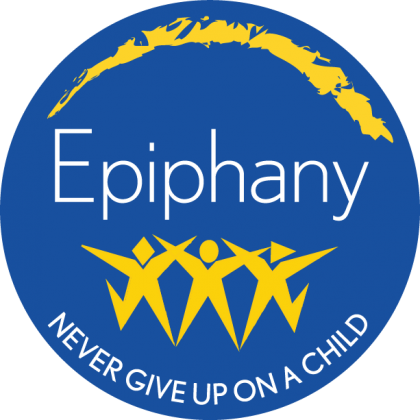Our weekly round-up of how the pandemic is impacting nonprofit management, fundraising, and recruitment – and what your organization can do in response…
2 THINGS YOU NEED TO KNOW NOW
1. A Chief Development Officer’s Role in Organizational Contingency Planning
We know that CDOs have worked extremely hard to build and maintain their human talent and other resources. We also know that many of them have won the battle of being perceived as mission critical. And yet, as the pandemic continues to take its toll, many more nonprofits are being forced into active contingency planning, requiring their CDOs at the table and their development teams feeling vulnerable. In this forum, CDOs have to be willing and able to wear many hats: first and foremost, good stewards of their organization, its donors, and philanthropic resources; then, trusted and objective leaders at the table, including their understanding of the reality that they, too, have to be willing to look critically at their own team – and maybe make hard choices. What are some things the CDO can do?
- CDOs and CEOs know their Boards best. Help select the two or three members who can best guide contingency planning. Seek their advice or actively engage them for their expertise and examples of what they are doing in their own businesses, and because they have a deep understanding of your organization and how it runs. Choose board members who are also visionary about its future.
- CDOs are deeply experienced diplomats and negotiators. Help your team have tough conversations with respect for each other, while keeping the organization’s best interests at the center of the table.
- Put mission first – easy to say, harder to do when your own team may be a stake.The fact is you cannot make good decisions about your fundraising team unless you have a good understanding of how your organization sees its options. For example, if your organization has to furlough staff, you need to understand the indicators of how employees rejoin the team. What “if/then” revenue loops will your team consider and be accountable for? What programs and/or projects will be scaled back until revenue is restored? What new things will you do?
- Then, apply the same thinking to your own team. What are essential efforts? What are debatable under certain organizational contingencies? Which team members offer the greatest versatility of skill and deliverables and can get the most done? Under what conditions will potentially furloughed Advancement staff be invited back to work?
It is tempting to think that as a revenue producer, you will not be asked to entertain these ideas. Whether you are or not, you should. Making your team’s impact clear, transparent, and “up for discussion” will be the right thing, whether you need to make hard decisions or not. Whatever the outcome, your team will be stronger for your authentic engagement in contingency plans.
2. Keep New Donors Engaged
Acquisition of new donors is always hard. If there are bright spots in this pandemic, one may be that acquisition got a little easier for some. So, the next challenge is retaining them.
Many nonprofits, especially those directly combating the pandemic and serving impacted communities, are receiving a very significant influx of new donors. One of our clients recently reported that 80% of donors to their COVID-19 Relief Fund were new to their organization. Yet another reports that more than 70% of their donors are new. And with Giving Tuesday Now around the corner, many more nonprofits are likely to see more new donors as well. That makes retention worth prioritizing. Here are a couple ideas for keeping them.
- Timely follow up
Right now, many fundraisers have more on their plates than they can manage – and solicitation is their #1 top priority. Thank yous and other stewardship can fall down in the ranking. Turn that around! At our recent Coffee Talk with head fundraisers at human service organizations, one participant shared that her organization had instituted a new policy that all new donors of $1K+ are called immediately to be thanked and to learn enough about them that they could be qualified for the possibility of future support – stewardship and active prospect management at the same time. You could even consider getting your volunteers to make these thank you calls and ask three or four questions about the donor. If you don’t have the capacity for either, and/or for donors who give less than $1K, make use of email automation capabilities. You can set up an onboarding series —a set number of pre-written emails to be delivered over the course of a couple weeks—to thank new donors and welcome them to your community.
- Make sure new donors very clearly know the impact of their gift
Donors who have a clear understanding of the impact of their gift are more likely to continue support – we all know this to be true. Create engaging, consistent, and tailored communications, rich with pictures and videos of your staff, volunteers, and constituents (most likely you already have this, you just need to remember to keep refreshing the list of recipients).
And mix it up to maximize impact. Consider having your CEO or President call new donors who make larger commitments, even if the best they can do is leave a message. Arm them with three quick bullet points (e.g. “Your gift means that ……”). The donor won’t forget the CEO’s effort.
Find additional tips in the Chronicle of Philanthropy’s article “Tips for Keeping New Donors After a Giving Day.”
Nonprofit Spotlight
Highlighting the tenacity and creativity of nonprofits in unprecedented times…
 Last Friday night, Development Guild’s recent client, the Epiphany School, held its virtual gala. Heading into the plan, they teetered between thinking it a good idea and worrying that it might not get the results they needed. Well…it worked! They exceeded their fundraising goal and very successfully used the online platform, Classy, to create a virtual table host option for volunteers. They raised as much “night of” as they have at other galas, and their virtual table captains attracted a lot of new donors to Epiphany. Congratulations to them.
Last Friday night, Development Guild’s recent client, the Epiphany School, held its virtual gala. Heading into the plan, they teetered between thinking it a good idea and worrying that it might not get the results they needed. Well…it worked! They exceeded their fundraising goal and very successfully used the online platform, Classy, to create a virtual table host option for volunteers. They raised as much “night of” as they have at other galas, and their virtual table captains attracted a lot of new donors to Epiphany. Congratulations to them.



